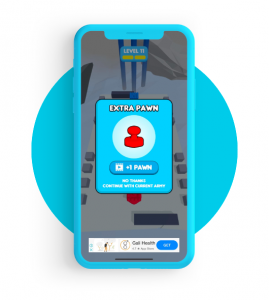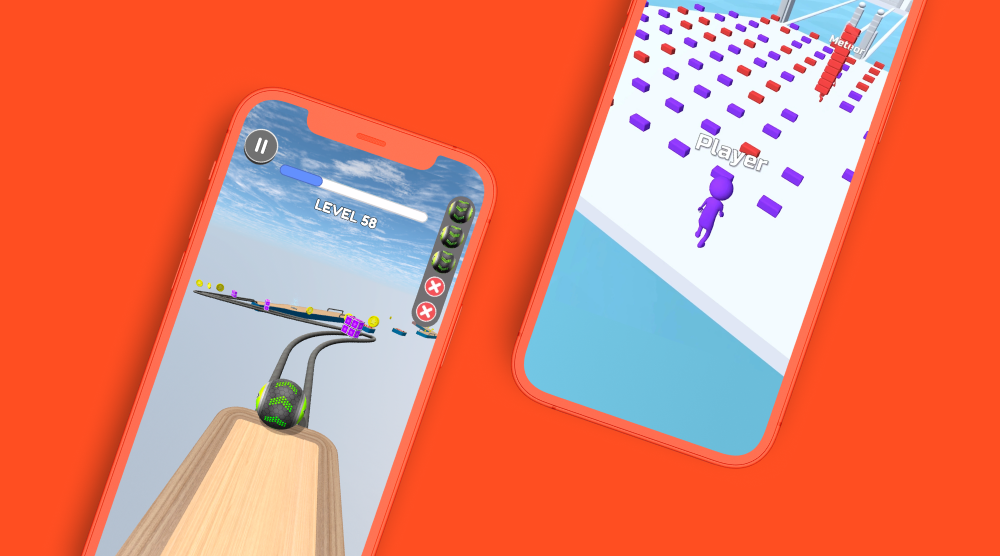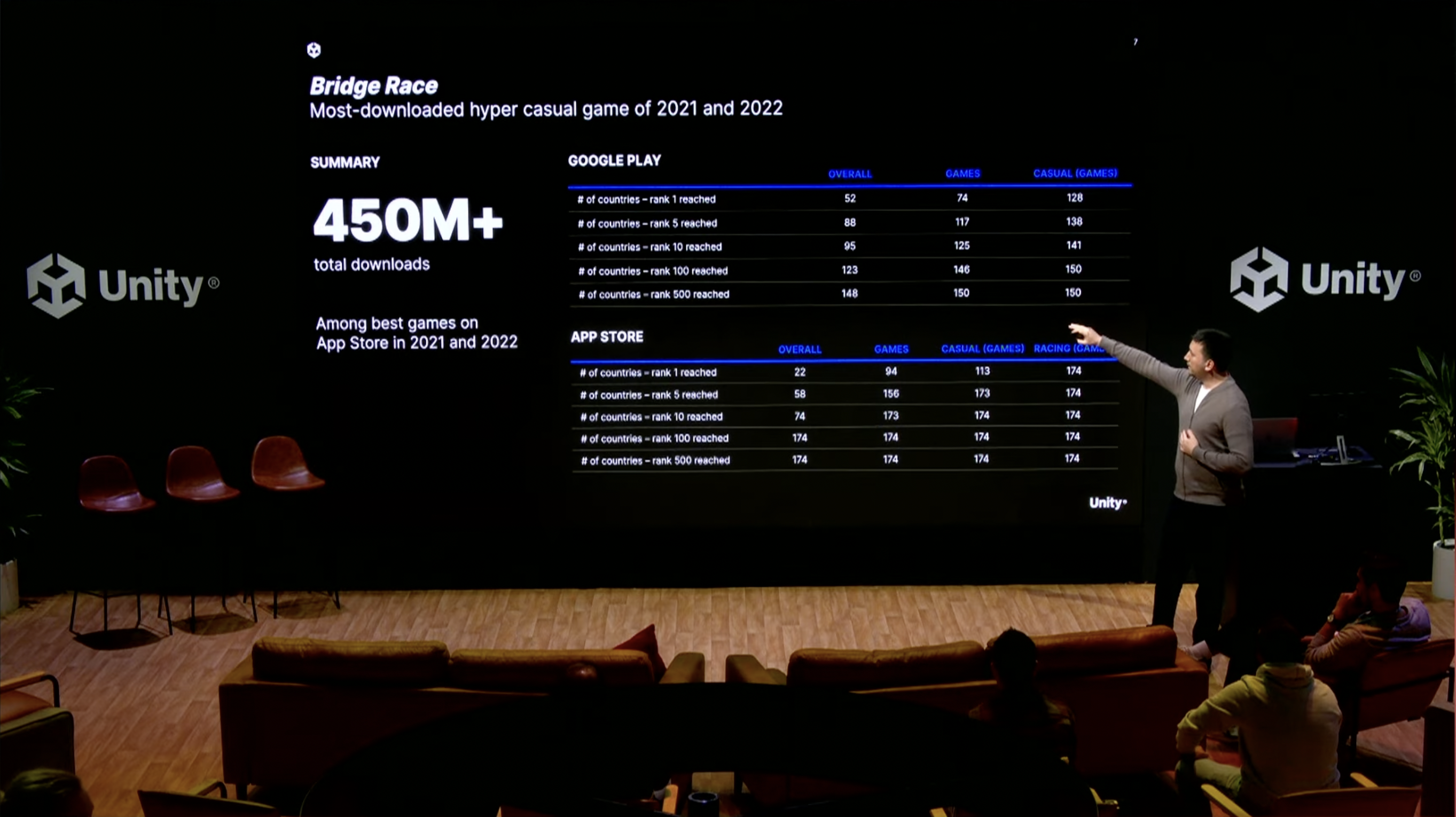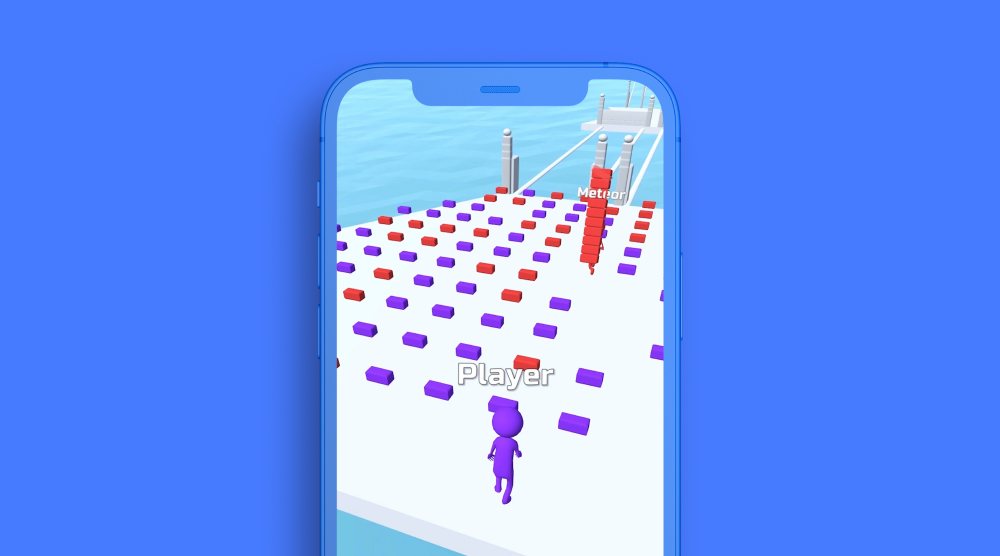After designing a great game, the next step is to get it into the hands of users and start monetizing so you can scale your business and earn a profit. That’s another place where publishers can help. Publishers have:
- Expertise in UA and monetization
- Valuable game design skills to modify the app for your target audience
- Access to technology that helps maximize LTV and refine games
- An understanding of the broader market and industry trends
- Access to significant financial resources
With all of the advantages that publishers offer, the question is how to attract publishing studios to your game and forge a partnership. The four tips outlined below help put your best foot forward to get the attention of publishers.
Tip #1: Show off your hyper-casual expertise
A good product is the basis of any great marketing, retention, and monetization because quality draws users, keeps them playing, and attracts advertisers. So it’s no wonder that publishers are looking for high-skill execution in game design and development, including clean and pleasant, graphics, a unique concept, easy-to-understand gameplay, a clear goal for players, and a compelling hook (e.g. special physics or music).

Supersonic Studio’s hit game Chat Master!, which is a great example of high-skill execution, puts people in a chat simulation that requires them to use their messaging skills to achieve goals and progress through the game. The clearly stated goals, intuitive game mechanics, clean and simple design, and additional minigames kept people playing and helped skyrocket Chat Master! to #2 on the US App Store. It’s easy to get caught up in your own game and think the game mechanics, concept, and goals of your game are clear, so have others - close friends, coworkers, etc. - try out your game to confirm.
Another way to prove that you have the expertise in game design that publishers are looking for is to create at least 3-4 games before you start looking for a publishing partner. Make your full portfolio available so that when publishers do their due diligence and look into your experience and background, they’ll easily see your other projects. Having multiple examples to show off your depth of knowledge and skill indicates that you understand the game genre and profile, which can help you attract users and optimize your game more easily.
Tip #2: Find the right fit
To attract publishers, it helps to think like them and put yourself in their perspective: What will they look for in a game’s design and from a developer partner? While we already mentioned the importance of quality execution, publishers are also looking for developers that are a good fit for them and are in line with their portfolio of launched games.
For example, if your studio specializes in hardcore strategy games, take a look at the publishers behind the top hardcore games on the app stores today. Then, you can start reaching out to those publishers and get yourself on their radars.
Additionally, consider what you want from a publisher. If you value transparency and want to learn more about marketing your app and the process of publishing, then you should look for a publisher whose values match your own.
Supersonic Studios is an example of a leading publisher for hyper-casual games, and we’ve helped developers like Fogwatt Games, Seenax, and Freeplay reach the top of the charts with their hyper-casual game apps. We’ve enjoyed incredible success with this genre so are always looking for more opportunities to apply our learnings and help other hyper-casual game developers achieve similar results. Fogwatt Games describes the process of working together: “The level of transparency Supersonic gives us is also unmatched. The team is great at sharing information with us as it comes in, keeping me in the loop on how things are progressing, while other publishers kept metrics more hidden.”
“The level of transparency Supersonic gives us is also unmatched. The team is great at sharing information with us as it comes in, keeping me in the loop on how things are progressing.”
- Carlton Forrester, Founder at Fogwatt Games
Tip #3: Run a marketability test ahead of time
Getting in the mindset of a publisher also means being prepared with a successful marketability test under your belt. Publishers will want to run another one once they get in touch, but you can get their attention with great performance from an initial round of testing.
A marketability test is what publishers look at to determine if a game is worth publishing and requires reaching a publisher’s target CPI, or cost per install. The lower the CPI, the better, and the higher the likelihood that a publisher will work with you. CPI is a measurement of how cost-effective it is to buy users at scale, so a low CPI is an important indicator to publishers that the game has potential to attract users and yield an impressive ROAS.
The CPI requirement varies between publishers, but to give you an idea, target CPI for Supersonic is under $0.35. If you don’t meet the target CPI, don’t give up: Apply what you learned from the test and submit your game again until you succeed.
Additionally, seeing the strengths and weaknesses of your game revealed by the marketability test lets you speak to what you’re doing well already and where you’d like to improve when publishers approach you, showing that you’re more informed and aware. For example, understanding that retention is low and you’ll need a publisher’s help to boost is an indicator to publishers that you’re aware of the games’ weak points and how a partnership can help.
Tip #4: Be communicative
Communicating with publishers is a two-way street, with developers reaching out to publishers and vice-versa. As a developer looking to get in touch with publishers, you can go through direct routes like emailing publishers that specialize in your game’s genre and seem like a good fit for your product and needs. You can also submit your game and start testing its marketability through self-serve platforms like the one by Supersonic Studios.
"Communicating with publishers is a two-way street, with developers reaching out to publishers and vice-versa."
To make it as easy as possible for publishers to reach out to you first, a simple yet essential best practice is to publish your contact information clearly and visibly on your website and social media accounts, like Facebook and Twitter. Then, don’t forget to check your email, voicemail, DMs, or wherever your contact info sends inquiries. Once a publisher finds your contact info and reaches out, there needs to be someone on the other end to receive the message and continue the conversation. Also follow publishers on these sites to stay on their radars and engage with them whenever possible while getting the latest trends and news in the market.
What to expect next
If you followed the tips above and got a publisher to work with you, you may be wondering what happens next. Introducing: the holy triangle of marketability, retention, and monetization. We briefly mentioned marketability here already, but after a publisher decides to work with you, they’ll tweak and optimize your game together to improve retention and start monetizing. Learn more about the holy triangle and what to expect while working with a publisher in this article.
Let's put these tips to good use
Publish your game with Supersonic



